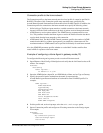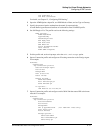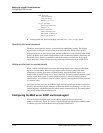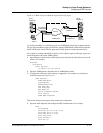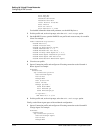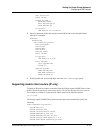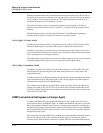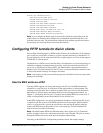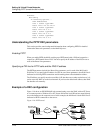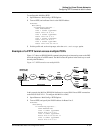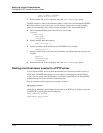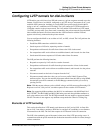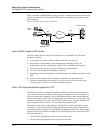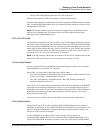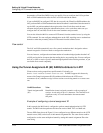
Setting Up Virtual Private Networks
Configuring PPTP tunnels for dial-in clients
MAX 6000/3000 Network Configuration Guide 11-27
mobile-ipx Password="unit"
User-Service=Framed-User,
Ascend-Route-IPX=Route-IPX-Yes,
Framed-Protocol=PPP,
Ascend-IPX-Peer-Mode=IPX-Peer-Dialin,
Framed-IPX-Network=40000000,
Ascend-IPX-Node-Addr=12345678,
Ascend-Home-Agent-IP-Addr=192.168.6.18,
Ascend-Home-Network-Name="homenet",
Ascend-Home-Agent-Password="pipeline"
Note: If you configure the Home Agent in router mode (which forwards packets from the
mobile client to its internal routing module), the Ascend-Home-Network-Name line is not
included in the user entry. The Ascend-Home-Network-Name attribute specifies the name of
the answering unit across the WAN on the home IPX network.
Configuring PPTP tunnels for dial-in clients
Point-to-Point Tunneling Protocol (PPTP) enables Windows 95 and Windows NT Workstation
users to dial into a local ISP to connect to a private corporate network across the Internet. To
the user dialing the call, the connection looks like a regular login to an NT server that supports
TCP/IP, IPX, or other protocols.
The MAX acts as a PPTP Access Controller (PAC), which functions as a front-end processor to
offload the overhead of communications processing. At the other end of the tunnel, the NT
server acts as a PPTP Network Server (PNS). All authentication is negotiated between the
Windows 95 or NT client and the PNS. The NT server’s account information remains the same
as if the client dialed in directly. No changes are needed.
Note: After logging in with your username and password, the MAX unit does not present the
terminal server prompt.
How the MAX works as a PAC
Currently, PPTP supports call routing and routing to the NT server by PPP-authenticated
connection on a per-line basis, or on the basis of the called number or calling number. The
following section describes how to dedicate an entire WAN access line for each destination
PNS address. For details about configuring WAN lines and assigning phone numbers, see
Chapter 3, “Configuring WAN Access.” For details about routing PPTP calls on the basis of
called or calling number, see the TAOS RADIUS Guide and Reference.
In the PPTP configuration, you specify the destination IP address of the PNS (the NT server),
to which all calls that come in on the PPTP-routed line will be forwarded. When the MAX
receives a call on that line, it passes the call directly to the specified IP address end-point,
creating the PPTP tunnel to that address if one is not already up. The PNS destination IP
address must be accessible by IP routing.
Note: The MAX handles PPTP calls differently than it does regular calls. No Connection
profiles are used for these calls, and the Answer profile is not consulted. The calls are routed
through the PPTP tunnel solely on the basis of the phone number dialed.
Following are the PPTP PAC configuration parameters (shown with sample settings):



